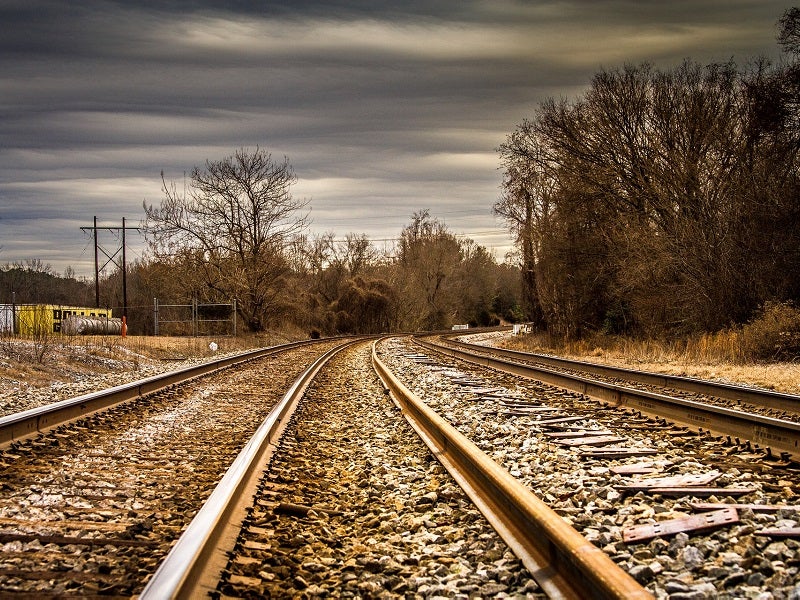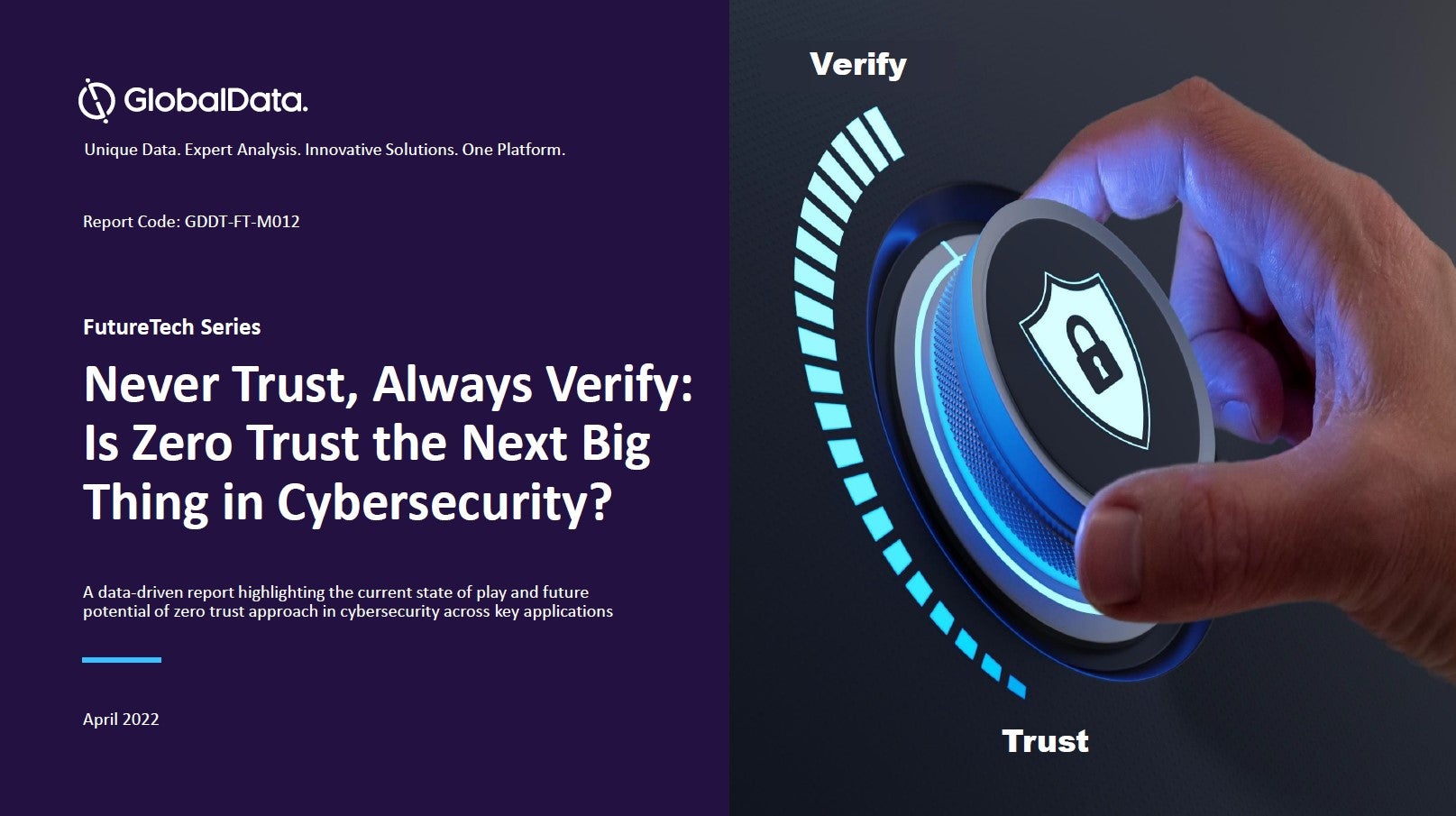
By the reckoning of the World Economic Forum, the combined value of digitalisation to both industry and society will surpass $100tn by 2025.
This road to digitalisation can essentially be traced back to the development of the internet in the 1990s. According to the 2018 Global Digital Report, more than four billion people are now connected to the global network – roughly 53% of the world population. Over three billion of them use social media to disseminate information.
How well do you really know your competitors?
Access the most comprehensive Company Profiles on the market, powered by GlobalData. Save hours of research. Gain competitive edge.

Thank you!
Your download email will arrive shortly
Not ready to buy yet? Download a free sample
We are confident about the unique quality of our Company Profiles. However, we want you to make the most beneficial decision for your business, so we offer a free sample that you can download by submitting the below form
By GlobalDataThus, there is a clear onus on industries to follow modern societal mores and digitalise their services. To some extent, the rail sector has done just that. Increasingly, passengers make journey reservations online, while a number of rail companies have implemented new technologies, ranging from leisure services onboard to automating more operations.
Yet, while digitalisation is clearly perceived as an opportunity amongst most rail transport stakeholders, it is no way near pervasive enough. That is something the European Commission is keen to remedy. Upon assuming office as the Commission’s new president in 2014, Jean-Claude Junker included the digital single market as one of the ten priorities on which he pledged his cabinet would deliver.
In the interim, the EU has promoted a cross-policy approach and several programmes to ensure policy frameworks, finance research and infrastructure, and better develop standards and connectivity within the rail sector.
This drive has been supported by the European Parliament, which, earlier this year, published a report on how further embracing digitalisation could create a more competitive European rail sector. Below are five of the report’s key takeaway points:
1. There are high hopes for the European rail traffic management system
Identified in the report as “the backbone of digital trains”, the European rail traffic management system, or ERTMS, aims to provide a unified signalling and control system across the European rail network.
Considered to be an ambitious major industrial project – there are currently over 30 national rail signalling systems in the EU – ERTMS could cut out a number of technical and operational issues which continue to take place at borders.
Installed both trackside and onboard, the system is comprised of a European train control system, meaning trains remain at a safe speed (up to 500km/h) and distance from other trains. ERTMS could also allow rail companies to install just one signalling onboard system, reducing costs and driver training expenditure.
Originally, the plan had been for ERTMS to be operational on the six corridors with the highest freight traffic by 2020. This was revised in 2017 and now is aiming to equip 50% of nine core freight corridors by 2023 – and the remainder by 2030.
There has, however, been some grousing over delays to the implementation of ERTMS. Both the EU Agency for Railways and the European coordinator for the ERTMS, Karl Vinck, have observed recently that deployment of this system has been too slow. According to Vinck, the biggest problem has been the slow migration from legacy signalling to the ERTMS.
2. EU funding programmes are paramount
Unsurprisingly, financial investments in digital infrastructure, research and innovation, and digital skills are vital. A huge source of financial support for digitalisation in the rail sector comes from Horizon 2020, the EU’s funding programme for R&D. Roughly €13bn of the programme’s total €80bn purse has been allocated to the railways.
While Horizon is set to end next year, there are proposals for a renewed programme, Horizon Europe, which would run from 2021 to 2027, and would have a budget of €100bn (in current prices).
The Connecting Europe Facility (CEF) is also cited as another key funding instrument. CEF’s €24.1bn transport budget focusses predominantly on improving cross-border connections and addressing missing links. As well as funding ERTMS, CEF also “promotes rail interoperability, energy efficiency and security”.
The proposal for a renewed CEF after 2020 suggests €30.6bn of its new budget would be devoted to transport, with €3bn committed to digitalisation and telecoms – with an overarching aim to “improve the integration of the transport, energy and digital sectors”.
Furthermore, the European Regional Development Fund (ERDF) invests in broadband networks. The fund’s proposal for a Digital Europe programme has a financial envelope of around €9.2bn.
3. Rail companies are already offering a broader range of digital services to their customers
From mobile ticketing apps and real-time informative websites to onboard ‘infotainment’, rail companies are becoming more ambitious in the services they offer their passengers.
The digitalisation of reservation and ticketing has proven to be particularly beneficial.
“On the one hand, passengers get an easier access to their travel details, which can be electronically stored on their smartphones or tablets,” reads the report.
“On the other, the cost of providing tickets is significantly lowered for operators since they do not have to produce individual disposable tickets for each journey. Moreover, rail operators can use stored travel data to assess travel patterns and then modify existing services or plan new ones.”
The paper makes reference to Swiss company Südostbahn, which introduced its JustGo ticketing scheme in 2014; as is OBB, Austria’s national railway operator, whose infotainment services on its Railjet trains includes information on real-time connections, as well as a selection of television programmes.
Trenitalia and DB – Italy and Germany’s national operators, respectively – offer similar services on certain services, while France’s SNCF added new digital services on many of its high-speed trains in 2017.
4. Automated train operations are the future
Shifting responsibility from the driver to the train control system, automated train operations (ATO) are set to play a greater role in the near future.
While autonomous systems already feature in driverless metros and light rail transit, experts believe the combination of ATO with the European Transport Control System (part of the ERTMS) to be very promising.
As the report explains: “ERTMS manages train signalling, speed control and automatic brakes while the ETCS enables beacons installed on the track to retrieve information and convey driving instructions to the vehicle, ensuring its safety. ATO, meanwhile, controls the train’s driving and braking systems.
“This combined solution enables trains to travel at an optimised speed, shortening headways and, consequently, improving line capacity. ATO could also save energy consumption and raise punctuality and safety.”
It would appear rail operators are keen to explore the potential of ATO. SBB, the Swiss federal railway group, has developed and tested an automated driver assistance system on the Bern-Olten high-speed line. Utilising a programme designed to cut out unnecessary stops and drive down energy consumption, the system calculates the optimum speed for the train, which is then transmitted to the driver.
DB, too, has conducted pilot tests into driverless operations, which it claims could become a reality within the next five years. In the UK last year, Govia Thameslink Railway and Network Rail applied ATO with ETCS for the first time on the mainline railway during a passenger service to London St Pancras.
5. Cyber threats and other challenges
While the benefits of digitalisation might appear abundant, both rail experts and stakeholders are in unison that it also presents a set of challenges – as is the case with all disruptive technologies.
A significant challenge comes in the shape of cyber security. According to an IBM study, attacks on industrial automated control systems were up by over 600% between 2012 and 2014. The more the rail industry digitalises, the greater the risk it will be seen as fair game by cyber criminals. Rail companies will need to develop counteractive strategies to stave off attacks and protect their assets.
But the most complicated challenge of all – beyond funding or the implementation of automated systems – will be “developing a new mindset for rail operators and authorities,” claims the paper.
“Rail digitalisation modifies the business model, which must evolve from a rather rigid model towards a more dynamic network, joining suppliers, technological platforms, mobility providers and customers,” it reads.




